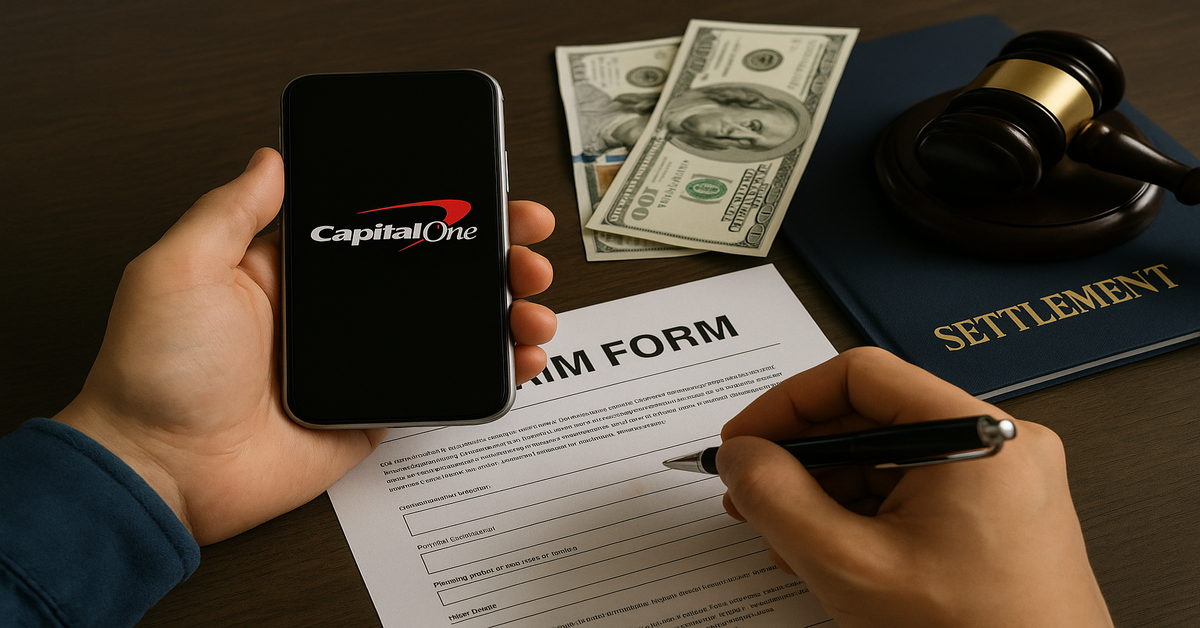In recent years, data breaches have emerged as one of the most significant cybersecurity threats, impacting millions of consumers and challenging the integrity of financial institutions. Among the most widely publicized breaches was the Capital One data breach, which exposed sensitive data of millions of customers and sparked lawsuits, regulatory action, and ultimately, a large-scale settlement.
This article explores the Capital One data breach, the settlement process, the implications for affected consumers, and the broader lessons about data security and corporate responsibility.
The Capital One Data Breach: An Overview
When Did It Happen?
The Capital One data breach occurred in 2019. A hacker gained unauthorized access to Capital One’s servers, resulting in one of the largest data exposures in the financial sector.
How Many People Were Affected?
Approximately 100 million Americans and 6 million Canadians were affected. The breach exposed a vast array of personal data, including:
- Names
- Addresses
- Phone numbers
- Email addresses
- Dates of birth
- Self-reported income
- Credit scores
- Social security numbers (for some)
- Linked bank account numbers (for some)
How Did It Happen?
The breach exploited a misconfigured web application firewall, which allowed the attacker to retrieve data from Capital One’s cloud storage servers. The alleged perpetrator, a former employee of a cloud hosting company, was later arrested.
Capital One’s Response
Upon discovering the breach, Capital One immediately fixed the configuration vulnerability and worked with federal law enforcement to investigate the incident. The company also offered free credit monitoring and identity protection services to affected individuals.
Legal and Regulatory Consequences
Consumer Lawsuits
The breach led to numerous class-action lawsuits filed by affected consumers who claimed damages for potential identity theft and the inconvenience of dealing with the fallout.
Regulatory Action
In addition to consumer lawsuits, regulators scrutinized Capital One’s security practices. The company faced investigations by federal and state authorities, focusing on whether adequate safeguards were in place.
Settlement Negotiations
To resolve the multitude of legal claims, Capital One entered into settlement negotiations, leading to a comprehensive data breach settlement agreement.
Key Details of the Capital One Data Breach Settlement
Settlement Amount
Capital One agreed to pay hundreds of millions of dollars to settle claims, including:
- Monetary compensation for out-of-pocket expenses.
- Free identity theft and credit monitoring services.
- Funding for administrative costs related to settlement claims processing.
Who Is Eligible?
Consumers affected by the breach were eligible to participate in the settlement if they:
- Had personal information compromised in the breach.
- Incurred out-of-pocket expenses due to the breach (e.g., credit monitoring, identity theft restoration, or other related costs).
Types of Compensation
- Reimbursement for Out-of-Pocket Expenses
Eligible claimants could receive reimbursement for documented expenses directly linked to the breach, such as:- Costs for credit monitoring or identity protection services.
- Fraudulent charges not reimbursed by financial institutions.
- Costs for freezing or unfreezing credit reports.
- Compensation for Time Spent
Claimants could also be compensated for the time spent addressing issues arising from the breach (such as contacting banks, credit agencies, or law enforcement). - Free Services
Capital One provided free credit monitoring and identity theft protection to affected individuals for a set period.
Claims Process
The settlement agreement outlined a claims process, which included:
- Submitting documentation of expenses.
- Providing proof of time spent dealing with the breach.
- Using an online portal or mail to file claims.
Deadlines
Specific deadlines were set for:
- Filing claims.
- Excluding oneself from the settlement (to pursue independent legal action).
- Objecting to the terms of the settlement.
Final Approval
The settlement required court approval. After a fairness hearing, where objections and concerns were reviewed, the court finalized the settlement terms.
Impact on Consumers
Financial Relief
The settlement provided much-needed financial relief to consumers who suffered direct monetary losses.
Credit Monitoring
The credit monitoring services offered through the settlement helped consumers protect themselves from future fraud and identity theft.
Lessons on Data Security
For many, the breach served as a wake-up call about the importance of personal data security and the steps individuals can take to safeguard their information.
Impact on Capital One and the Industry
Financial Penalties
The settlement, along with regulatory fines and legal fees, cost Capital One hundreds of millions of dollars, affecting its bottom line.
Reputational Damage
The breach damaged Capital One’s reputation, leading to customer dissatisfaction and skepticism about the bank’s cybersecurity practices.
Industry-Wide Changes
The incident prompted other financial institutions to:
- Review and strengthen their cybersecurity protocols.
- Improve cloud storage security.
- Enhance monitoring for unauthorized access.
Increased Regulatory Scrutiny
Regulators tightened cybersecurity requirements, holding financial institutions more accountable for protecting customer data.
How Consumers Can Protect Themselves
Regularly Monitor Accounts
Consumers should regularly check bank statements and credit reports for unauthorized activity.
Use Credit Monitoring
Enrolling in credit monitoring services can alert consumers to suspicious activity.
Strong Password Practices
Using strong, unique passwords and enabling multi-factor authentication helps prevent unauthorized access to accounts.
Freeze Credit
Freezing credit reports can prevent new credit accounts from being opened fraudulently.
Stay Informed
Staying up-to-date on data breaches and responding promptly if personal data is compromised is crucial.
Broader Lessons from the Capital One Data Breach
The Risks of Cloud Computing
While cloud storage offers convenience and scalability, it also introduces security vulnerabilities if not properly managed.
Importance of Transparency
Capital One’s swift disclosure of the breach was a positive step, demonstrating the importance of transparency in maintaining public trust.
Legal Precedents
The settlement set precedents for how data breach claims are handled in court and the level of compensation victims can expect.
Corporate Responsibility
The breach underscored the importance of corporate responsibility in safeguarding consumer data and responding to security incidents.
Future Trends in Data Breach Settlements
Larger Settlements
As data breaches affect larger numbers of people and involve more sensitive data, settlement amounts are likely to increase.
Regulatory Collaboration
Settlements may increasingly involve coordination between class-action litigants and regulatory agencies.
Proactive Compensation
Companies may begin offering proactive compensation or services to affected customers to mitigate reputational damage and legal risk.
Focus on Non-Monetary Remedies
Settlements may include commitments to improve cybersecurity measures, conduct regular audits, and report on progress.
What Consumers Should Know About Data Breach Settlements
Filing a Claim
It’s essential to file claims promptly and provide thorough documentation to maximize compensation.
Understanding Rights
Consumers should understand their rights under the settlement and be aware of options like opting out or objecting.
Scams
Scammers often target breach victims. Consumers should be cautious of fraudulent calls or emails claiming to be related to the settlement.
Conclusion
The Capital One data breach settlement represents a critical moment in the evolving landscape of data security, consumer protection, and corporate accountability. For millions of affected consumers, the settlement provided compensation, credit monitoring, and reassurance that their concerns were acknowledged.
More broadly, the breach and its aftermath highlighted the vulnerabilities inherent in digital data storage and the necessity for robust cybersecurity measures. It also underscored the legal and financial consequences companies face when they fail to protect consumer data adequately.
As technology continues to advance and data becomes even more integral to daily life, consumers, corporations, and regulators must work together to create a safer digital environment. The lessons learned from the Capital One data breach will inform best practices and policies for years to come.
FAQs
1. What was the Capital One data breach?
The Capital One data breach occurred in 2019, exposing personal data of over 100 million customers due to a server vulnerability.
2. What compensation was available in the settlement?
Eligible consumers could receive reimbursement for out-of-pocket expenses, compensation for time spent addressing the breach, and free credit monitoring services.
3. How could consumers file a claim?
Claims could be filed online or by mail, requiring documentation of expenses and time spent dealing with breach-related issues.
4. Was there a deadline to file a claim?
Yes, the settlement established specific deadlines for submitting claims, opting out, or objecting to the settlement terms.
5. Did the settlement improve Capital One’s security practices?
Yes, as part of the settlement and regulatory requirements, Capital One enhanced its cybersecurity protocols and data protection measures.
6. How can consumers protect themselves from future breaches?
Consumers should monitor their credit reports, use credit monitoring services, practice good password hygiene, and stay informed about data security best practices.











